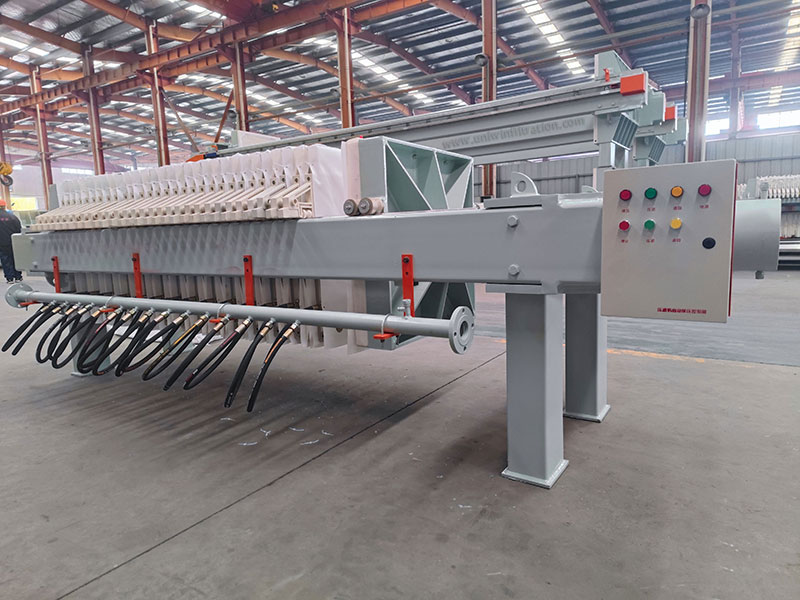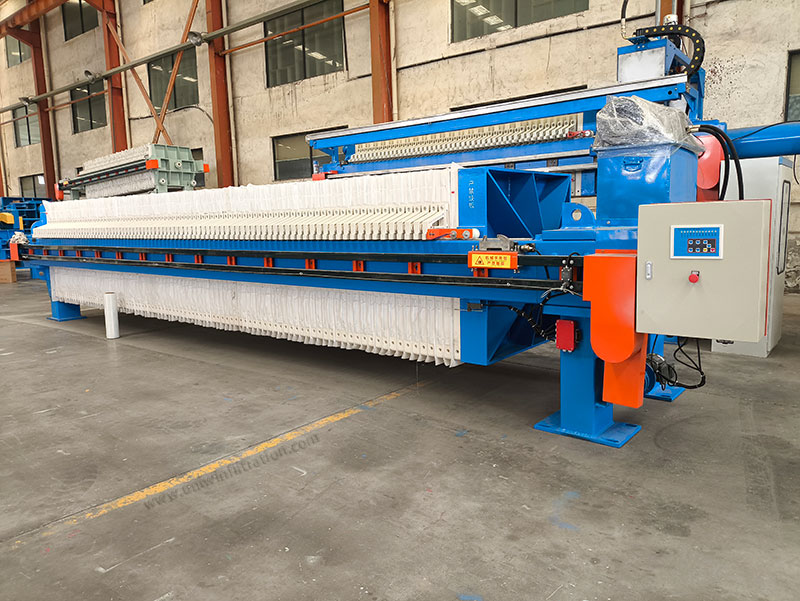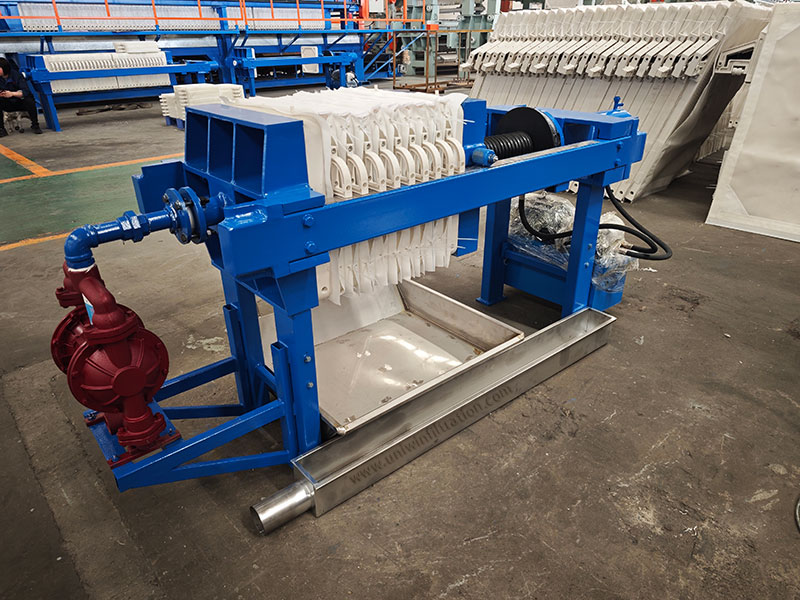Screw Press
The screw press is a new type of sludge dewatering equipment, widely used in sludge treatment processes in industries such as municipal wastewater, food, chemicals, papermaking, printing and dyeing, and petrochemicals.
Its unique operating principle and structural design make it particularly suitable for oily and sticky sludge, as well as sludge types that are difficult to treat with traditional dewatering equipment.
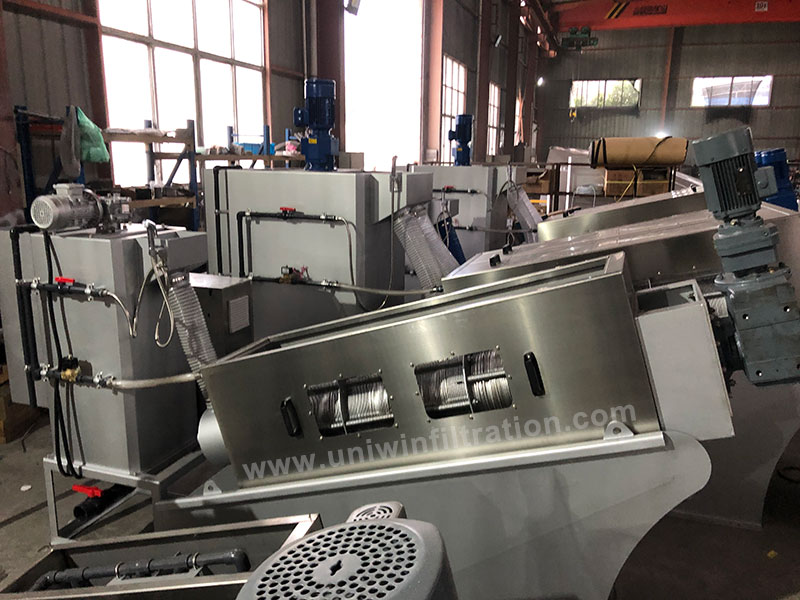
Screw Press Structure
The screw shaft system
It consists of multiple stacked fixed rings and floating rings. The fixed rings are fixed to the central shaft and do not rotate, while the floating rings rotate with the shaft, generating shear forces against the fixed rings.
Filtering device
A filtering gap is formed between the fixed and floating rings, which gradually decreases from the feed end to the discharge end, achieving a step-by-step dehydration and pressurization process.
Drive system
Comprising a motor and a reducer, it controls the screw shaft speed and ensures stable operation.
Flocculation and mixing system
The sludge and reagent mixing device ensures a sufficient flocculation reaction and improves dewatering efficiency.
The moving ring and the stationary ring form the filter element. The moving ring rotates with the screw shaft to prevent clogging, while the stationary ring is fixed to provide support.
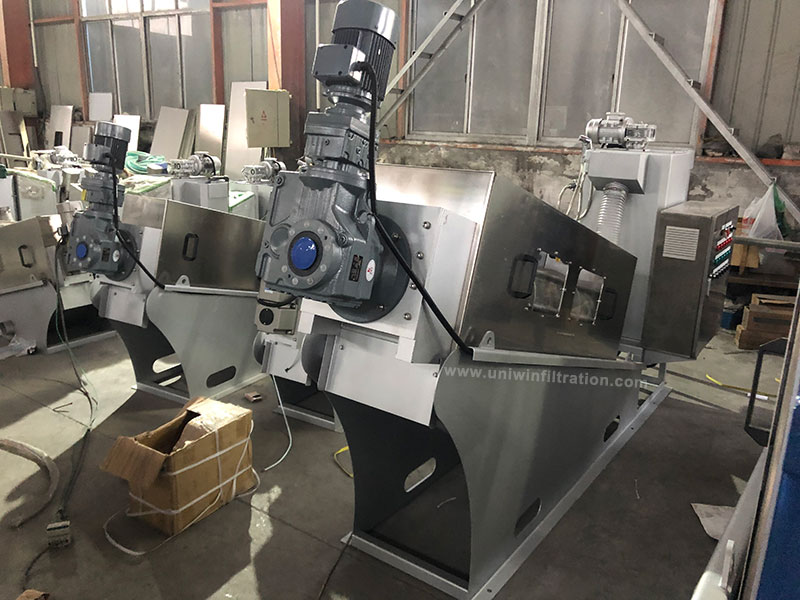
Working Principle of a Screw Press
A screw press combines gravity concentration with screw extrusion dewatering, achieving continuous sludge dewatering through a main body consisting of moving and stationary rings and a screw shaft. Its core process is as follows:
Sludge feed
Sludge is transported to the thickening section via a pipeline.
Concentration section
After entering the sludge, it is initially concentrated under the action of gravity. The relative movement of the floating ring and the fixed ring causes the sludge to slowly move forward, and free water is discharged through the gaps between the rings.
Dewatering section
The pitch gradually decreases, and the volume continuously shrinks. The shear force generated by the fixed and movable rings breaks up the flocs, squeezing out more water.
Sludge discharge section
The dewatered sludge cake is discharged from the outlet, and the filtrate is collected and discharged from the bottom, completing the dewatering process.
Screw Press Parameter
| Model | Material | D.S.Capacity (ds/h) | Sludge Capacity (10000mg/L) | Dimension (L x W x H) | Weight (kg) | Running Weight (kg) |
|---|---|---|---|---|---|---|
| HDL131 | SS 304 | ~ 6 -- 10 kg | ~1.0 | 2000x660x1040 mm | 190 | 300 |
| HDL201 | SS 304 | ~ 9 -- 20 kg | ~1.5 | 2500x800x1450 mm | 320 | 550 |
| HDL202 | SS 304 | ~ 18 -- 30 kg | ~3.0 | 2600x950x1450 mm | 470 | 680 |
| HDL203 | SS 304 | ~ 27 -- 45 kg | ~4.5 | 2700x1100x1450 mm | 620 | 920 |
| HDL301 | SS 304 | ~ 30 -- 60 kg | ~6.0 | 3200x800x1700 mm | 600 | 1100 |
| HDL302 | SS 304 | ~ 60 -- 100 kg | ~12 | 3400x1250x1700 mm | 1350 | 2050 |
| HDL303 | SS 304 | ~ 90 -- 150 kg | ~18 | 3600x1600x1700 mm | 1820 | 2580 |
| HDL304 | SS 304 | ~ 120 -- 200 kg | ~24 | 3600x2050x1700 mm | 2400 | 3520 |
| HDL401 | SS 304 | ~ 100 -- 150 kg | ~15 | 4000x1000x2200 mm | 1100 | 2500 |
| HDL402 | SS 304 | ~ 185 -- 350 kg | ~30 | 4050x1420x2200 mm | 1900 | 3600 |
| HDL403 | SS 304 | ~ 400 -- 600 kg | ~45 | 4050x1800x2200 mm | 3050 | 5250 |
| HDL404 | SS 304 | ~ 480 -- 800 kg | ~61 | 4400x2650x2350 mm | 5150 | 7200 |
Advantages of Screw Presses
- Never clogs, the rotating ring cleans the gaps, making it suitable for oily, highly viscous sludge.
- Reduces operating costs, with low energy and water consumption and easy maintenance.
- Continuous automatic operation enables 24-hour automated dewatering.
- Compact, small footprint, and integrated design make installation easy.
- Low noise and vibration make it suitable for environmentally sensitive applications.
Detailed Photos
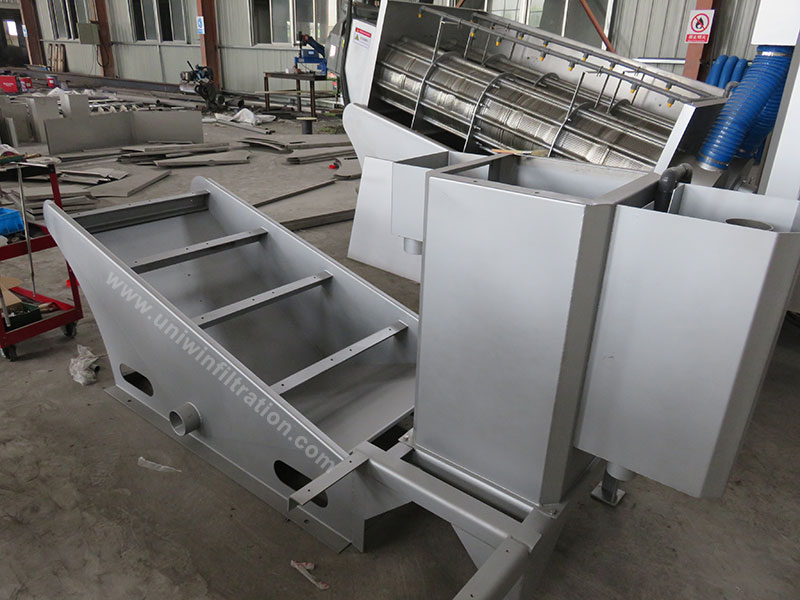



Applications
- Municipal wastewater treatment plants.
- Food processing plants (e.g., slaughterhouses, breweries).
- Petrochemical plants, oil sludge treatment.
- Paper mills, printing and dyeing plants.
- Aquaculture processing and aquaculture wastewater treatment.


